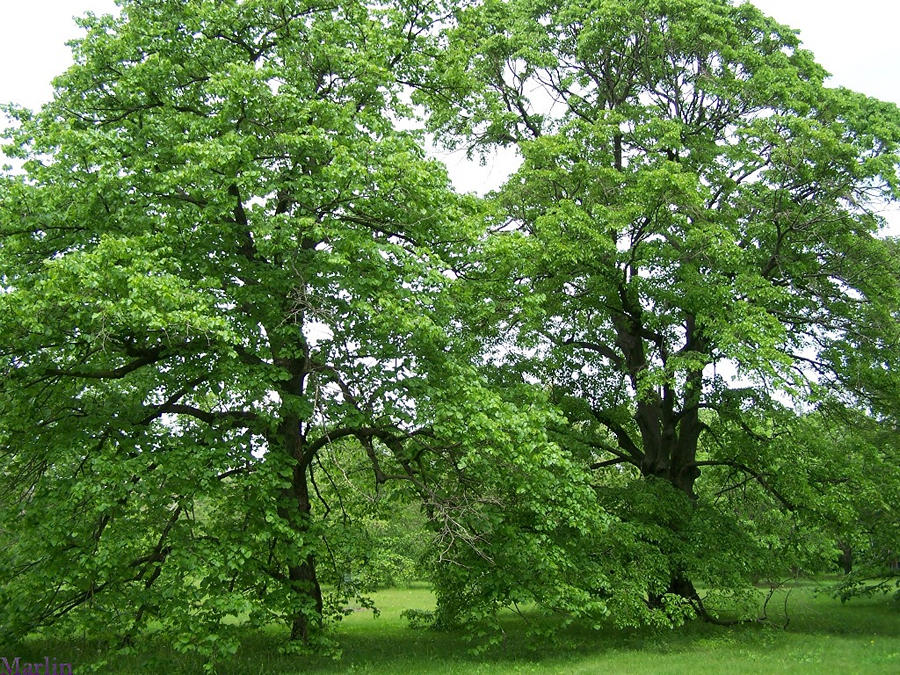American Basswood or Linden Tilia americana
Family Tiliaceae
Lindens have fragrant tiny flowers that attract a panoply of pollinators and produce highly-valued honey.

These lovely basswoods are two of the original Morton Arboretum collection, from seeds planted in 1923 [2]
American basswood or Linden is a native North American deciduous tree. The northernmost Tilia species, it is a large, rapid-growing tree of eastern and central hardwood woodlands. Best growth is in the central part of the range on deep, moist soils; development is vigorous from sprouts as well as seed. American basswood is an important timber tree, especially in the Great Lakes States. The soft, light wood has many uses in wood products. The tree is also well known as a honey-tree, and the seeds and twigs are eaten by wildlife. It is commonly planted as a shade tree in urban areas of the eastern states.
Linden seeds are eaten by mice, squirrels, and chipmunks, thus reducing the chances of seedling establishment. Many different insects attack basswood, but few serious insect problems exist. The linden borer makes long, irregular tunnels, particularly at the base of the tree, and may damage weak, very young, or very old trees. Local infestations of defoliators may occur. The primary ones include the linden looper, basswood leafminer, spring cankerworm, fall cankerworm, tussock moth, gypsy moth, and forest tent caterpillar.
Skeletonized by Japanese beetle linden foliage
The relatively recent introduction of the Japanese beetle (Popillia japonica) into North America has placed several varieties of lindens into jeopardy through defoliation, especially the little-leaf linden Tila cordata. The beetles can skeletonize and defoliate an entire tree in as little as a few weeks. (See our article “What’s eating my Linden?”)
The flowers possess a nectar which attracts bees and produces a strong flavored honey. When this tree is in flower it will be full of bees, hence its common name “Bee Tree”. During the three weeks that the Lindens bloom, bees forsake most other flowers. The honey that they make of Linden nectar is white in color, and highly regarded. The flowers when gathered and dried can be used to make tea. Linden flowers are used in the manufacture of perfumes.
Linden bracts and fruit. (Bracts are the very light green structures)
Basswood has relatively soft wood that works exceptionally well and is valued for hand carving and has many other uses including cooperage, boxes, veneer, excelsior, and pulp. Basswood is economically important for timber, especially in the Great Lakes States.
Family Tiliaceae – Basswoods, Lindens
50 genera and 400 species; widespread in tropical and subtropical regions, with relatively few species in temperate regions. Especially abundant in Southeast Asia and Brazil. The leaves of all the Tilias are heart-shaped and most are asymmetrical, and the tiny fruit, looking like peas, always hang attached to a ribbon-like, greenish bract.

